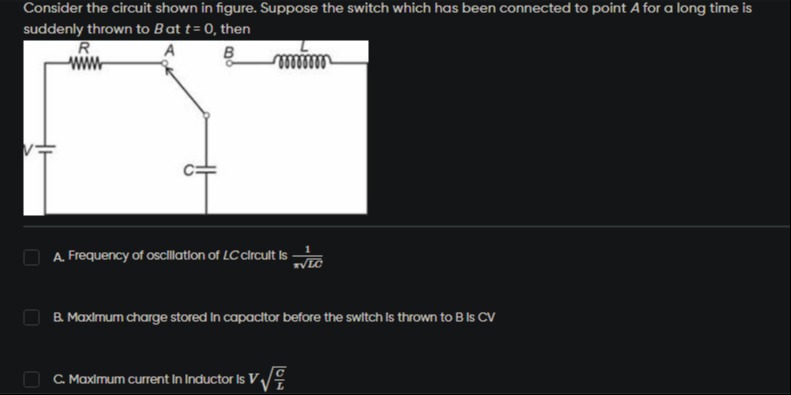Question
Question: Consider the circuit shown in figure. Suppose the switch which has been connected to point A for a l...
Consider the circuit shown in figure. Suppose the switch which has been connected to point A for a long time is suddenly thrown to B at t = 0, then

Frequency of oscillation of LC circuit is πLC1
Maximum charge stored in capacitor before the switch is thrown to B is CV
Maximum current in Inductor is VLC
B, C
Solution
When the switch is connected to point A for a long time, the capacitor C is fully charged to the voltage of the source V, so the initial charge on the capacitor is Q0=CV.
At t=0, the switch is thrown to point B, connecting the charged capacitor to the inductor L, forming an LC circuit. The initial conditions for the oscillation are q(0)=CV and i(0)=0.
The angular frequency of oscillation in an ideal LC circuit is ω=LC1. The frequency of oscillation is f=2πω=2πLC1. Option A is incorrect as it states the frequency is πLC1.
The maximum charge stored in the capacitor during the oscillation is equal to the initial charge, Qmax=CV. Option B is correct.
The total energy in the LC circuit is conserved. Initially, the energy is stored in the capacitor: Uinitial=21CV2. When the current in the inductor is maximum (Imax), the charge on the capacitor is zero, and all the energy is stored in the inductor: Umax_inductor=21LImax2. Equating the energies: 21CV2=21LImax2 Imax2=LCV2 Imax=VLC Option C is correct.
